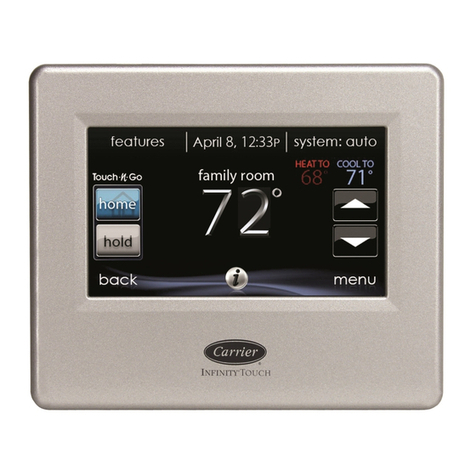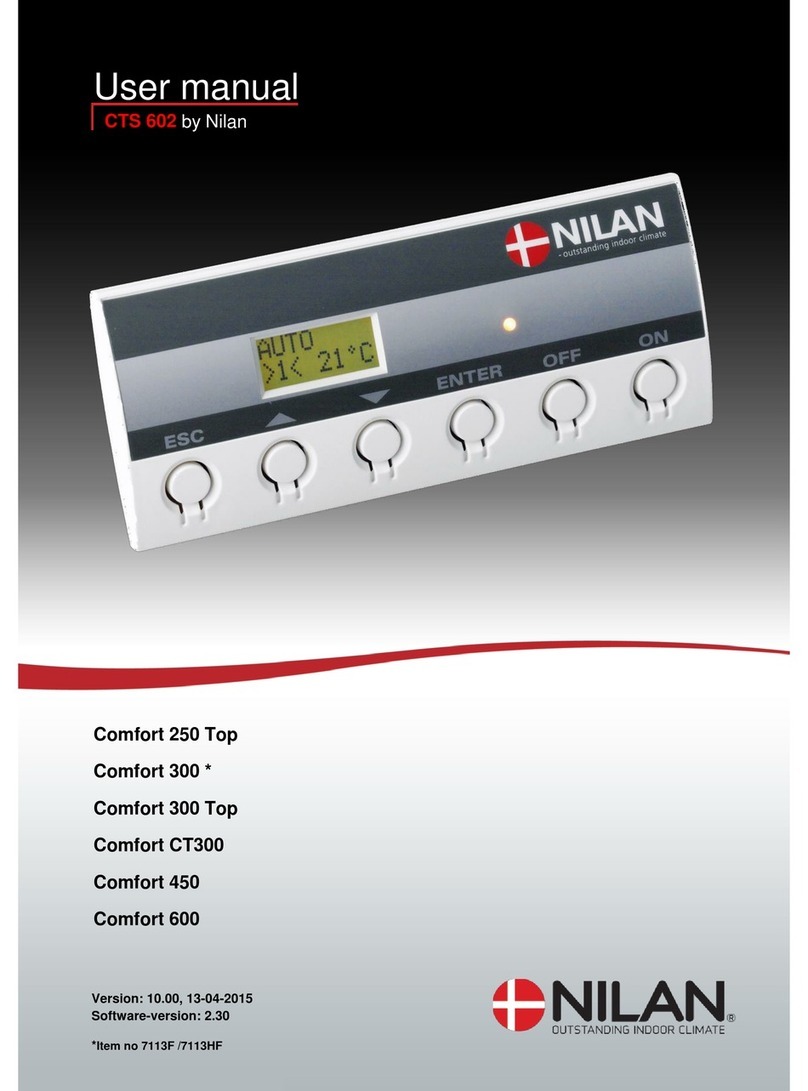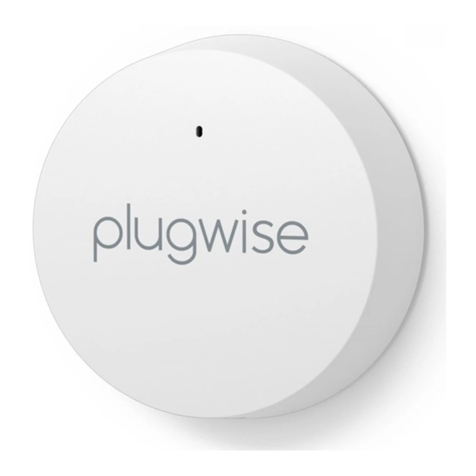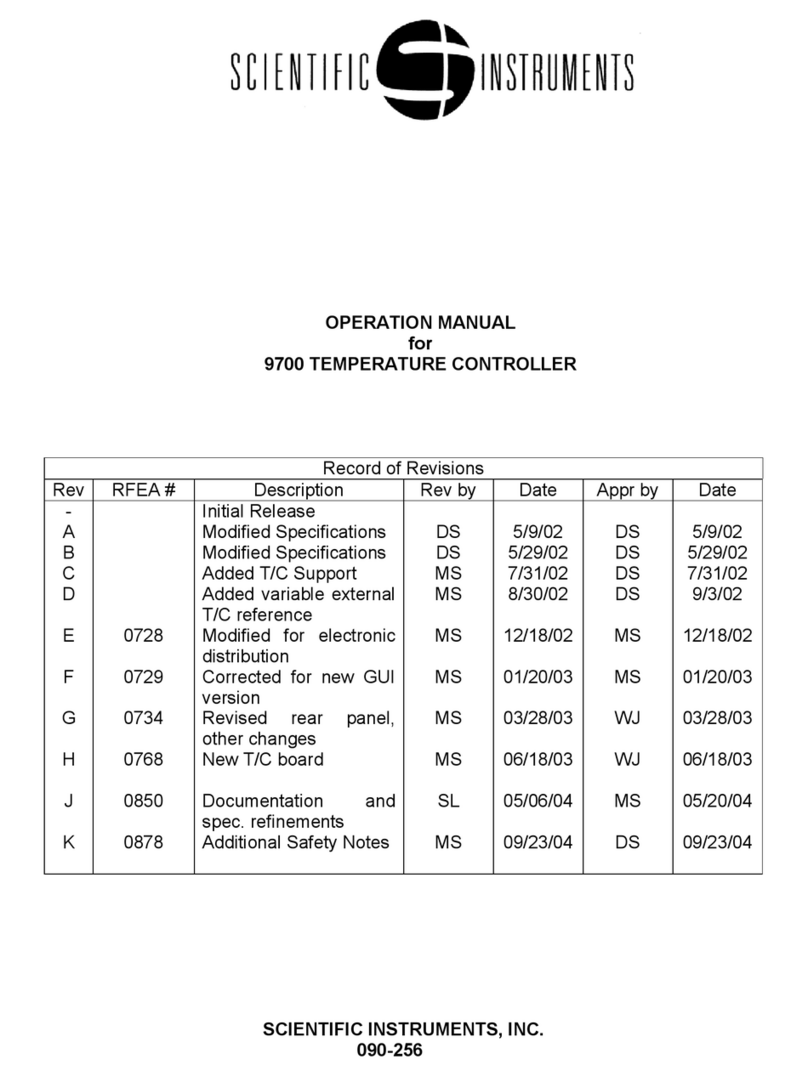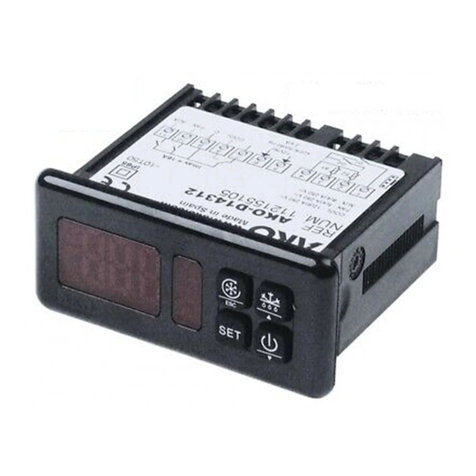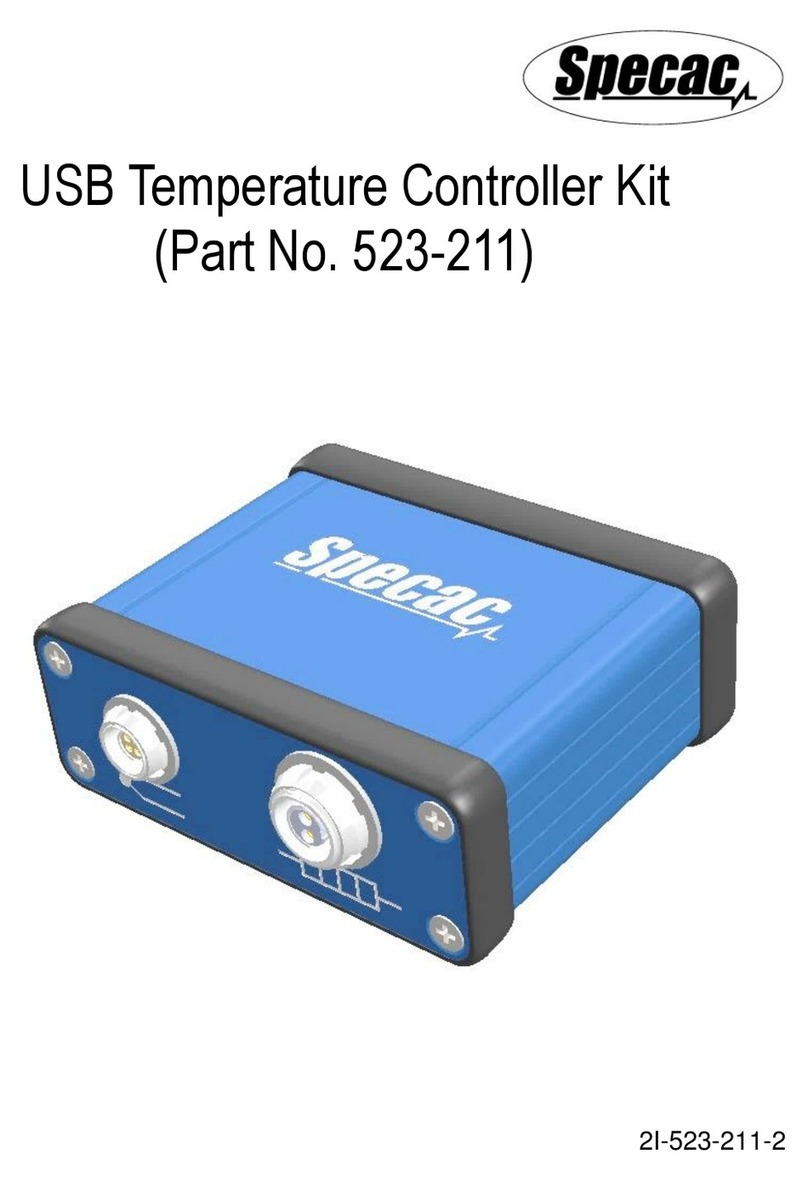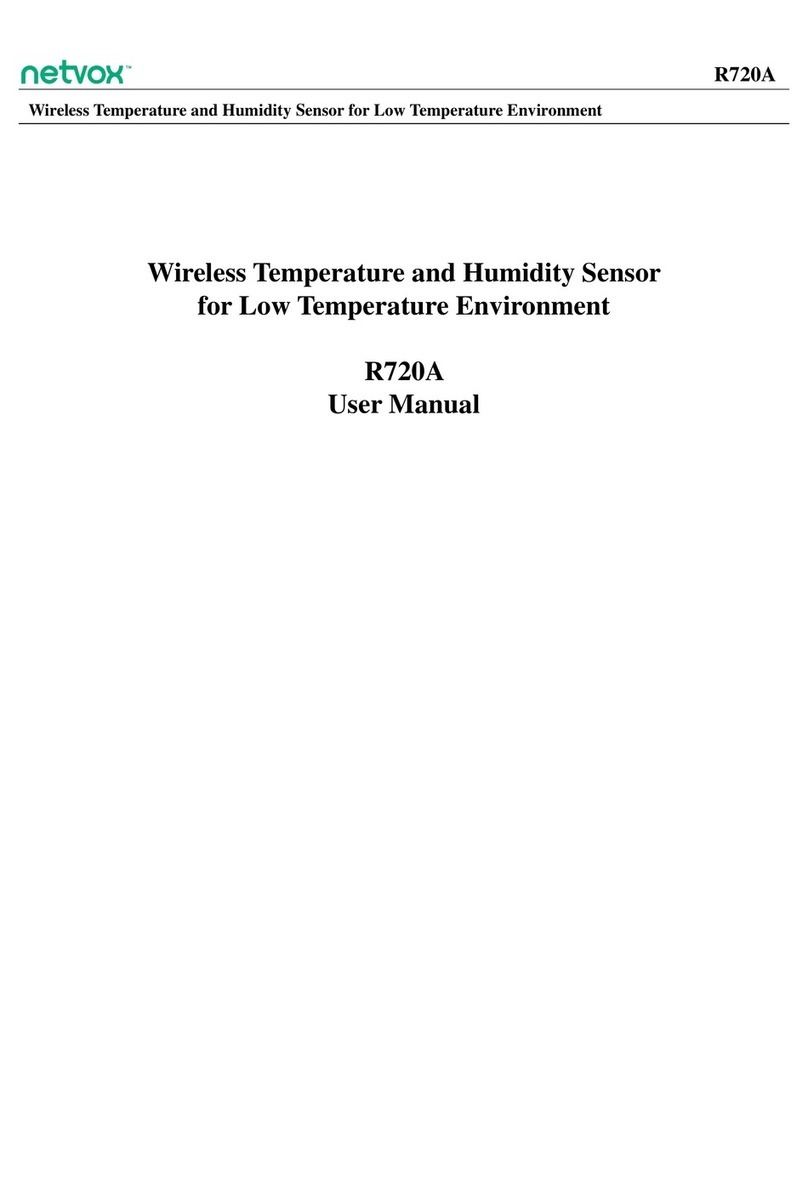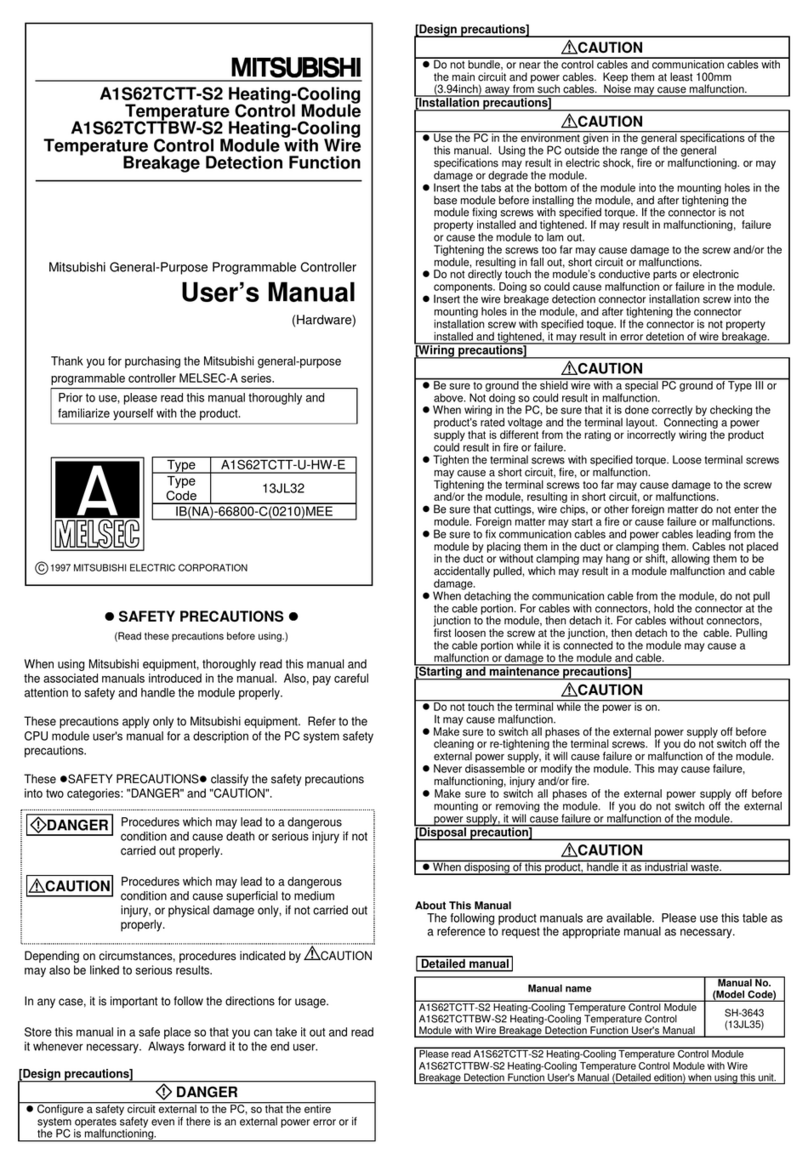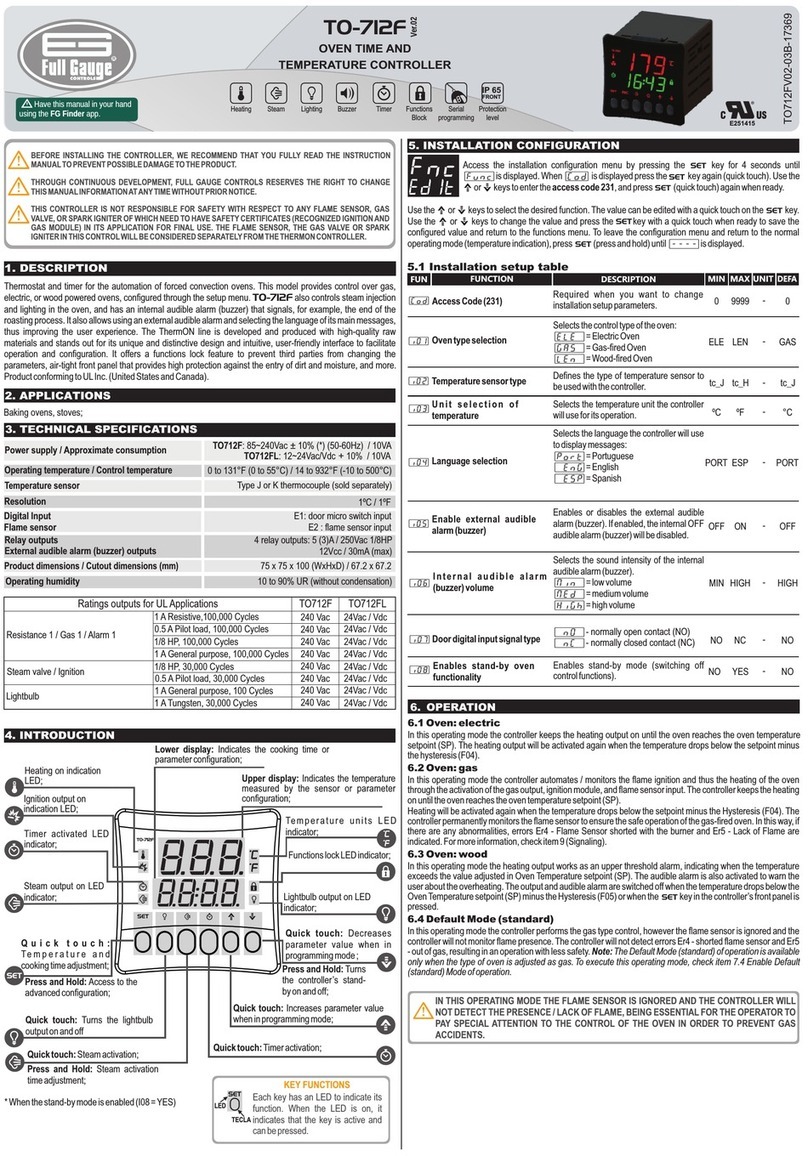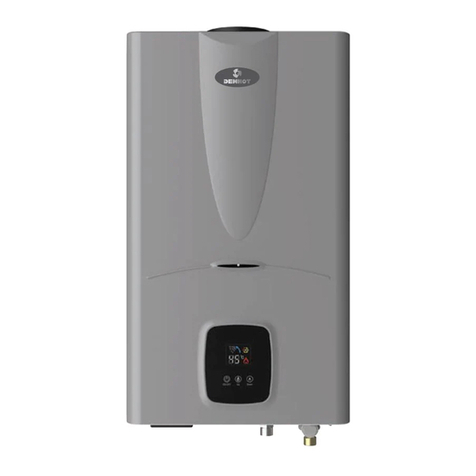Thermal Care Aquatherm RQE Instruction Manual



Table of Contents
Foreword .................................................................................................................................................................................................................. 1
Safety Guidelines .................................................................................................................................................................................................. 1
Pre-Installation....................................................................................................................................................................................................... 2
Receiving Inspection ....................................................................................................................................................................................... 2
Unit Storage........................................................................................................................................................................................................ 2
Installation - Mechanical.................................................................................................................................................................................... 2
Foundation.......................................................................................................................................................................................................... 2
Unit Location...................................................................................................................................................................................................... 2
Rigging ................................................................................................................................................................................................................. 2
Fluid Distribution Piping................................................................................................................................................................................ 2
Installation - Electrical......................................................................................................................................................................................... 3
Controller Operation ........................................................................................................................................................................................... 4
Figure 1 –Standard Controller User Interface .................................................................................................................................. 4
Figure 2 –Premium Controller User Interface .................................................................................................................................. 4
Changing Temperature Display Scale ...................................................................................................................................................... 4
Table 1 - Controller Operating Buttons............................................................................................................................................... 5
Table 2 - Temperature Displays.............................................................................................................................................................. 6
Table 3 - Operating Lights........................................................................................................................................................................ 6
Table 4 - Controller Control Fault Logic.............................................................................................................................................. 7
Program Menu................................................................................................................................................................................................... 8
Table 5 - Program Menu Items............................................................................................................................................................... 8
Seal Saver Sequence Initiation................................................................................................................................................................ 9
Pump Running Hour Display ................................................................................................................................................................... 9
SPI Communications (Optional) ...............................................................................................................................................................10
Table 6 - SPI Option Parameters..........................................................................................................................................................10
Modbus RTU (Optional)...............................................................................................................................................................................11
Table 7 - ModBus Option Parameters................................................................................................................................................11
Start-up...................................................................................................................................................................................................................12
Step 1 –Connecting Main Power ............................................................................................................................................................13
Step 2 –Fill Coolant Circuit ........................................................................................................................................................................13
System Fill Water Chemistry Requirements.....................................................................................................................................13
Table 8 - Fill Water Chemistry Requirements..................................................................................................................................14
Step 3 –Initial Unit Operation...................................................................................................................................................................14
Preventive Maintenance...................................................................................................................................................................................15
Once a Week ....................................................................................................................................................................................................15
Once a Month..................................................................................................................................................................................................15
Troubleshooting..................................................................................................................................................................................................16
Drawings.................................................................................................................................................................................................................16

Page Intentionally Blank

1
Foreword
The temperature control unit is a packaged unit that
typically includes a fluid pump, electric immersion
heater, and temperature control valve in a cabinet.
The purpose is to provide circulation and
temperature control of a cooling fluid.
This manual is to serve as a guide for installing,
operating, and maintaining the equipment. Improper
installation, operation, and maintenance can lead to
poor performance and/or equipment damage. Use
qualified installers and service technicians for all
installation and maintenance of this equipment.
This manual is for our standard product. The
information in this manual is general in nature. Unit-
specific drawings and supplemental documents are
included with the equipment as needed. Additional
copies of documents are available upon request.
Due to the ever-changing nature of applicable
codes, ordinances, and other local laws pertaining to
the use and operation of this equipment, we do not
reference them in this manual.
Safety Guidelines
Observe all safety precautions during installation,
start-up, and service of this equipment. The
following is a list of symbols used in this manual and
their meaning.
General Warning
Electricity Warning
Sharp Element Warning
Hot Surface Warning
Flammable Material Warning
Explosive Material Warning
General Mandatory Action
Wear Eye Protection
Wear Protective Gloves
Wear Ear Protection
Disconnect Before Carrying Out Maintenance or
Repair
Connect an Earth Terminal to Ground
Only qualified personnel should install, start-up, and
service this equipment. When working on this
equipment, observe precautions in this manual as
well as tags, stickers, and labels on the equipment.
WARNING: Any use or misuse of this equipment
outside of the design intent may cause injury or harm.
WARNING: This equipment contains hazardous
voltages that can cause severe injury or death.
WARNING: This equipment contains hot water or
coolant under pressure. Accidental release of hot water
or coolant under pressure can cause personal injury
and or property damage.
WARNING: This equipment may contain fan blades or
other sharp edges. Make sure all fan guards and other
protective shields are securely in place.
WARNING: The exposed surfaces of motors, piping,
and other fluid circuit components can be very hot
and can cause burns if touched with unprotected
hands.
CAUTION: Disconnect and lock out incoming power
before installing, servicing, or maintaining the
equipment. Connecting power to the main terminal
block energizes the entire electric circuitry of the unit.
Shut off the electric power at the main disconnect
before opening access panels for repair or
maintenance.
CAUTION: Wear eye protection when installing,
maintaining, or repairing the equipment to protect
against any sparks, debris, or fluid leaks.

2
CAUTION: The equipment will exceed 70 dBA sound
pressure at 1 meter distance and 1 meter elevation
when operating. Wear ear protection as required for
personal comfort when operating or working in close
proximity to the chiller.
CAUTION: Wear protective gloves when installing,
maintaining, or repairing the equipment to protect
against any sparks, debris, or fluid leaks.
Pre-Installation
Receiving Inspection
When the unit arrives, verify the information on the
unit nameplate agrees with the order
acknowledgement and shipping papers. Inspect the
equipment for any visible damage and verify all
items shown on the bill of lading are present. If
damage is evident, document it on the delivery
receipt by clearly marking any item with damage as
“unit damage” and notify the carrier. In addition,
notify our Customer Service Department and they
will provide assistance with preparing and filing
freight damage claims, including arranging for an
estimate on repair costs; however, filing the shipping
damage claim is the responsibility of the receiving
party. Do not install damaged equipment without
getting the equipment repaired.
Shipping damage is the responsibility of the carrier.
To protect against possible loss due to damage
incurred during shipping and to expedite payment
for damages, it is important to follow proper
procedures and keep records. Photographs of
damaged equipment are excellent documentation
for your records.
Start unpacking the unit, inspect for concealed
damage, and take photos of any damage found.
Once received, equipment owners have the
responsibility to provide reasonable evidence that
the damage did not occur after delivery. Photos of
the equipment damage while the equipment is still
partially packed will help in this regard. Refrigerant
lines can be susceptible to damage in transit. Check
for broken lines, oil leaks, damaged controls, or any
other major component torn loose from its
mounting point.
Record any signs of concealed damage and file a
shipping damage claim immediately with the
shipping company. Most carriers require concealed
damages be reported within 15 days of receipt of
the equipment. In addition, notify our Customer
Service Department and they will provide assistance
with preparing and filing freight damage claims,
including arranging for an estimate on repair costs;
however, filing the shipping damage claim is the
responsibility of the receiving party.
Unit Storage
When storing the unit it is important to protect it
from damage. Blow out any water from the unit;
cover it to keep dirt and debris from accumulating
on or getting in and store in an indoor sheltered
area that does not exceed 145°F.
Installation - Mechanical
Foundation
Install the unit on a rigid, non-warping mounting
pad, concrete foundation, or level floor suitable to
support the full operating weight of the equipment.
When installed the equipment must be level within
¼ inch over its length and width.
Unit Location
The unit is available in many different configurations
for various environments. Refer to the proposal and
order acknowledgement document for the
equipment to verify the specific design conditions in
which it can operate.
To ensure proper airflow and clearance space for
proper operation and maintenance allow a minimum
of 12 inches of clearance between the sides of the
equipment and any walls or obstructions. Avoid
locating piping or conduit over the unit to ensure
easy access with an overhead crane or lift to lift out
heavier components during replacement or service.
Rigging
The unit has a base with casters to facilitate easy
movement and positioning. Follow proper rigging
methods to prevent damage to components. Avoid
impact loading caused by sudden jerking when
lifting or lowering the unit. Use pads where abrasive
surface contact may occur.
Fluid Distribution Piping
Proper insulation of chilled process fluid piping is
crucial to prevent condensation. The formation of

3
condensation adds a substantial heat load to the
cooling system.
The importance of properly sized piping cannot be
overemphasized. See the ASHRAE Handbook or
other suitable design guide for proper pipe sizing. In
general, run full size piping out to the process and
then reduce the pipe size to match the connections
on the process equipment. One of the most
common causes of unsatisfactory unit performance
is poor piping system design. Avoid long lengths of
hoses, quick disconnect fittings, and manifolds
wherever possible as they offer high resistance to
water flow. When manifolds are required, install
them as close to the use point as possible. Provide
flow-balancing valves at each machine to assure
adequate water distribution in the entire system.
Install shut-off valves at each machine to allow for
isolation of the unit.
Installation - Electrical
All wiring must comply with local codes and the
National Electric Code. Minimum Circuit Amps (MCA)
and other unit electrical data are on the unit
nameplate. A unit specific electrical schematic ships
with the unit. Measure each leg of the main power
supply voltage at the main power source. Voltage
must be within the voltage utilization range given on
the drawings included with the unit. If the measured
voltage on any leg is not within the specified range,
notify the supplier and correct before operating the
unit. Voltage imbalance must not exceed two
percent. Excessive voltage imbalance between the
phases of a three-phase system can cause motors to
overheat and eventually fail. Voltage imbalance is
determined using the following calculations:
% Imbalance = (Vavg –Vx) x 100 / Vavg
Vavg = (V1 + V2 + V3) / 3
Vx = phase with greatest difference from Vavg
For example, if the three measured voltages were
442, 460, and 454 volts, the average would be:
(442 + 460 + 454) / 3 = 452
The percentage of imbalance is then:
(452 –442) x 100 / 452 = 2.2 %
This exceeds the maximum allowable of 2%.
There is a terminal block for main power connection
to the main power source. The main power source
should be connected to the terminal block through
an appropriate disconnect switch. There is a separate
lug in the main control panel for grounding the unit.
Check the electrical phase sequence at installation
and prior to start-up. Operation of the unit with
incorrect electrical phase sequencing will result in
improper pump performance. Check the phasing
with a phase sequence meter prior to applying
power. The proper sequence should read “ABC” on
the meter. If the meter reads “CBA”, open the main
power disconnect and switch two line leads on the
line power terminal blocks (or the unit mounted
disconnect). Do not interchange any load leads that
are from the unit contactors or the motor terminals.
WARNING: This equipment contains hazardous
voltages that can cause severe injury or death.
WARNING: This equipment contains hot water or
coolant under pressure. Accidental release of hot water
or coolant under pressure can cause personal injury
and or property damage.
WARNING: This equipment may contain fan blades or
other sharp edges. Make sure all fan guards and other
protective shields are securely in place.
WARNING: The exposed surfaces of motors, piping,
and other fluid circuit components can be very hot
and can cause burns if touched with unprotected
hands.
CAUTION: Disconnect and lock out incoming power
before installing, servicing, or maintaining the
equipment. Connecting power to the main terminal
block energizes the entire electric circuitry of the unit.
Electric power at the main disconnect should be shut
off before opening access panels for repair or
maintenance.
CAUTION: Wear eye protection when installing,
maintaining, or repairing the equipment to protect
against any sparks, debris, or fluid leaks.
CAUTION: Wear protective gloves when installing,
maintaining, or repairing the equipment to protect
against any sparks, debris, or fluid leaks.
CAUTION: Wire the unit ground in compliance with
local and national codes.

4
Controller Operation
Figure 1 –Standard Controller User Interface
Figure 2 –Premium Controller User Interface
The temperature control unit includes a controller to
perform all control functions directly from the front
panel. When Control Power is applied, the controller
initiates a diagnostic test of each indicating light and
display segment that temporarily lights them
sequentially. As part of this initial diagnostic test, the
program revision number appears in the
temperature display for a moment. After the initial
diagnostic sequence is completed, the controller is
ready for operation.
Changing Temperature Display Scale
The temperature controller is able to display
temperatures in either °F or °C. To determine which
temperature is in use and to change the temperature
scale used stop the unit and press the Power button
to turn off the controller. Press and hold the Stop
Button and then press the Power Button. When the
controller illuminates, release both buttons. The To
Process display will read "Unt". The Set Point display
will show either "F" or "C" depending on the current
display units selected. If "F" is displayed the
temperature display is in °F mode. If "C" is displayed
the temperature display is in °C mode. To change
from °F to °C press the Lower Set Point Temperature
button (down arrow). To change from °C to °F press
the Raise Set Point Temperature button (up arrow).
After changing to the desired scale, the Set Point
display shows the desired display units. Press and
release the Start button to store the new selection
into the controller memory then press and release
the Power button to exit the function. Press and
release the Power button again to restore controller
power. The unit is now ready for operation.

5
Table 1 - Controller Operating Buttons
Button
Description of Operation
Start
Pressing the Start button initiates a vent sequence. The vent sequence removes air to prevent improper operation and
premature heater failure. When initiated, the vent sequence opens the cooling valve for to allow air to escape, after 30
seconds it runs the pump for 30 seconds while the cooling valve is open to remove any remaining air from the system. Once
the vent sequence is complete, the cooling valve closes, the pump remains on, and normal operation begins. When the unit is
running, the Run indicating light is on and green. When enabled, the auto start feature has precedence over the start button.
See the Program Menu section for instructions on how to adjust the auto start feature. The vent sequence cancel prevents the
vent sequence from occurring when the unit has been operating and the fluid temperature is elevated. The factory default
value for the vent sequence cancel is 120°F. See the Program Menu section for instructions on how to adjust the temperature
of the vent sequence cancel. The Start button also performs an enter function while in the programming menu.
Stop
Pressing the Stop button clears all faults and stops the unit. When enable, the auto start feature has precedence over the start
button so if enables and an auto start signal is present, pressing the start button will not stop the unit. The Stop button also
performs a cancel function while in the programming menu.
Alarm Reset
When an alarm condition is present, the alarm light is on and red. Pressing the Alarm Reset button silences the alarm horn
(optional), opens the remote alarm contact (optional), and changes the alarm light from red to yellow. The alarm horn
(optional) and/or remote alarm contact (optional) remain disabled until a subsequent alarm occurs. To reset the state from
Alarm to Normal Operation, press the Alarm Reset button a second time.
Up
The Up button raises the set point temperature. Pressing and releasing the Up button increases the set point temperature one
degree. Pressing and holding the Up button continuously increases the set point temperature until released. The Up button
also adjusts various alarms and set point values when the unit in the programming mode.
Down
The Down button decreases the set point temperature. Pressing and releasing the Down button decreases the set point
temperature one degree. Pressing and holding the Down button continuously decreases the set point temperature until
released. The Down button also adjusts various alarms and set point values when the unit is in the programming mode.
Display/
Program
Pressing the Display/Program button changes the temperature displayed in the Process screen from supply to return. When
the display is set to supply temperature, an orange indicating light is on in the lower right corner of the Process temperature
display. When the display is set to return temperature, there is no orange indicating light in the lower right corner of the
Process temperature display. To toggle the Process temperature display from supply to return temperature, press and release
the Display/Program button. The display will return to the default Supply temperature automatically after 5 seconds without a
button press. In addition to switching between the supply and return process temperature displays, the Display/Program
button initiates and navigates through the program menu. See the Program Menu section for more detail.
Mold Purge
(Optional)1
The Mold Purge button initiates a mold water purge if this option is present and enabled. The mold purge option allows
compressed air to purge the circuit of water by forcing it out through the cooling valve. To initiate a mold purge sequence
stop the unit then press and release the mold purge button. During a mold purge, the cooling water out and mold purge
compressed air solenoid valves open. The mold purge sequence is 1 minute long. To stop the mold purge sequence before it
is completed, press the Mold Purge button again or press the Stop button. See the Program Menu section for instructions on
how to enable or disable this feature.
Crash Cool
(Optional)1
The Crash Cool button opens the crash cool solenoid valve if this option is present and enabled. Pressing the Crash Cool
button initiates a crash cool sequence. The crash cool sequence opens the crash cool valve, opens the vent/cooling valve, and
disables the heater. The Crash Cool sequence is 1 minute long. To stop the crash cool sequence before it is completed, press
the Crash Cool button again, or press the Stop button. See the Program Menu section for instructions on how to enable or
disable this feature.
Seal Saver
(Optional)2
The Seal Saver button initiates a cool-down sequence if the process supply water is above 90°F. The seal saver cool-down
sequence reduces the water temperature before the unit shuts off to extend the life of the pump seal. To initiate a Seal Saver
cool-down sequence, press and release the Seal Saver button. During this sequence, the cooling valve opens and the pump
runs for 120 seconds or until the temperature of the water reaches 90°F, whichever occurs first. During the Seal Saver cool-
down sequence the Set Point display temporarily toggles between the target value 90°F and current set point and the Pump,
Cool, and Seal Saver lights flash green. After the Seal Saver cool-down sequence is complete, the unit stops, the set point
temperature displays in the Set Point display, and the Seal Saver light remains solid green to indicate the completion of the
sequence. Pressing the Start and/or Stop buttons during a Seal Saver cool-down sequence stops the sequence. See the
Program Menu section for instructions on how to enable or disable this feature.
1Requires the Premium Controller option as well as the individual option for this function.
2Requires the Premium Controller option to have a dedicated easy-access control button. To initiate a Seal Save cool-down sequence on a unit
with the standard controller press and hold down the Start button, then press the Stop button and then release both buttons.

6
Table 2 - Temperature Displays
Display
Description of Operation
Set Point
The Set Point display normally shows the set point temperature. A decimal point in the lower right corner of this display indicates
the temperature unit of measure is set to °F, no decimal point indicates the temperature unit of measure is set to °C. See the
Menu Program section to change the temperature scale units of measure. This display also shows alarm codes and programming
information.
Process
The Process Temperature display normally shows supply temperature. A decimal point in the lower right corner of the display
indicates the temperature displayed is the supply temperature, no decimal point indicates the temperature displayed is the return
temperature. To change the display from supply to return temperature, press and release the Display/Program button. The
display will return to the default Supply temperature automatically after 5 seconds without a button press. This display also shows
alarm codes and programming information.
Table 3 - Operating Lights
Light
Description of Operation
Control Power
The Control Power light is on and green when 24VDC control voltage is present.
Autostart Signal
The Autostart Signal light is green when closed (run), yellow when open (stop), and unlit if this feature is disabled. This
feature allows starting and stopping of the unit by a remote contact closure. From the factory, the Autostart feature is
disabled. See the Program Menu section for instructions on how to enable or disable the Autostart feature. Do not
introduce any external voltage to the Autostart contacts; this will result in damage to the controller.
Pump
The Pump light is solid green when the pump is running and flashes red if the pump overload trips.
Heat
The Heat light is on and green when the heating is required.
Cool
The Cool light is on and green while in normal running operation when the cooling valve is open. The light flashes green
during a vent sequence or Seal Saver cool-down sequence.
Coolant Pressure
In
The Coolant Pressure In light will flash red if the inlet cooling water pressure drops below the set point of the low-
pressure safety switch. If a low-pressure condition occurs, the unit will automatically stop and remain de-energized until
the cooling water pressure is above the cut-in setpoint of the pressure switch. The light is solid green if the Coolant Inlet
Pressure is satisfactory. It will flash green while in the Purge mode.
Temperature Limit
The Temperature Limit light flashes yellow if a high or low temperature limit warning occurs and flashes red if a high or
low temperature limit safety occurs. A temperature limit safety stops the unit. Pushing the Alarm Reset button will reset
this alarm.
Electrical Phase
Error (Optional)1
The Electrical Phase Error light flashes red when a line voltage problem exists. This error indicates a loss of phase, phase
reversal, or phase imbalance.
Heat Error
(Optional)1
The Heat Error light is solid red when the controller calls for heat and heating does not occur. The Heat Error light flashes
red when the controller does not call for heat but heating occurs. Both conditions cause the unit to stop.
Seal Saver
(Optional)1
The Seal Saver light flashes green when the unit is executing a Seal Saver sequence. The Cool and Pump lights will also
flash green during a seal saver sequence. After the Seal Saver sequence is complete, the unit stops and the Seal Saver
light remains green to indicate the completion of the sequence. See the Seal Saver Button section for a description of the
Seal Saver function and operation.
Mold Purge
(Optional)2
The Mold Purge light flashes green when the unit is executing a purge sequence. The Cool light will also flash green
during a mold purge sequence. After the Mold Purge sequence is complete, the unit stops and the Mold Purge light
remains green to indicate the completion of the sequence. See the Mold Purge Button section for a description of the
Mold Purge function and operation. See the Program Menu section for instructions on how to enable or disable this
feature.
Crash Cool
(Optional)2
The Crash Cool light flashes green when the unit is executing a Crash Cool sequence. The Cool light will also flash green
during a crash cool sequence. After the Crash Cool sequence is complete, the unit stops and the Crash Cool light remains
green to indicate the completion of the sequence. See the Crash Cool Button section for a description of the Crash Cool
function and operation. See the Program Menu section for instructions on how to enable or disable this feature.
Communications
(Optional)2
The Communications light flashes green when the unit is properly transmitting and receiving a communication signal.
See the Program Menu section for instructions on how to enable or disable this feature.
1Requires the Premium Controller option.
2Requires the Premium Controller option as well as the individual option for this function.

7
Table 3 –Operating Lights (continued)
Light
Description of Operation
Remote Heat/Cool
(Optional)2
The Remote Heat/Cool light is on and yellow when this option is enabled. This feature allows the heating and cooling to
be turned on and off by remote contact closures. Switching a contact from open to close activates the heat or cool
function assigned to the contact. Switching the contact from closed to open deactivates the individual heat or cool
function assigned to the contact. When enabled the controller does not perform any heat or cool functions and relies
exclusively on the external contact closures for these functions; however, the unit maintains all warnings and safety
functions. From the factory, the Remote Heat/Cool feature is disabled. See the Program Menu section for instructions on
how to enable or disable this feature. Do not introduce any external voltage to the Remote Heat/Cool contacts; this will
result in damage to the controller.
Program Mode
The Program Mode light flashes yellow when the control system is in the programming menu.
1Requires the Premium Controller option.
2Requires the Premium Controller option as well as the individual option for this function.
Table 4 - Controller Control Fault Logic
Fault
Alarm
Indication
Pump Shut
Off
Heater
Shut Off
Unit Shut
Off
Alarm
Reset
Required1
Manual
Reset
Required2
Remote
Alarm
Activated3
Low Coolant Inlet Pressure
The Coolant Pressure In Light flashes
red
Yes
Yes
Yes
No
No
Yes
Temperature Limit Safety
The Set Point and Process
Temperatures Flash and the
Temperature Limit Light flashes red
Yes
Yes
Yes
Yes
No
Yes
Temperature Limit Warning
The Temperature Limit Light flashes
yellow
No
No
No
Yes
No
Yes
Pump Motor Overload
The Pump Light flashes red
Yes
Yes
Yes
Yes
Yes
Yes
Supply Probe Fault Hi
The Set Point Temperature Display
shows PRS and the Process
Temperature Display shows EHi
Yes
Yes
Yes
Yes
No
Yes
Supply Probe Fault Lo
The Set Point Temperature Display
shows PRS and the Process
Temperature Display shows ELo
Yes
Yes
Yes
Yes
No
Yes
Return Probe Fault Hi
The Set Point Temperature Display
shows PRR and the Process
Temperature Display shows EHi
Yes
Yes
Yes
Yes
No
Yes
Return Probe Fault Lo
The Set Point Temperature Display
shows PRr and the Process
Temperature Display shows ELo
Yes
Yes
Yes
Yes
No
Yes
Brownout
The Set Point Temperature Display
shows Brn and the Process
Temperature Display shows Out
Yes
Yes
Yes
Yes
No
Yes
3-Phase Power Error
(Optional)4
The Electrical Phase Error light flashes
red
Yes
Yes
Yes
Yes
No
Yes
Heater Contactor Error
(Optional)4
The Heat Error light flashes red
Yes
Yes
Yes
Yes
No
Yes
1Pressing the Alarm Silence/Reset resets alarm.
2A manual reset of the pump motor thermal overload is required to reset this alarm.
3Activates the alarm horn and closes the alarm contact (optional).
4Requires the Premium Controller option.

8
Program Menu
Access to the program menu is password protected
to prevent unintended alteration to the program
settings and parameters. To access the programming
menu the unit must be in a stopped state. To enter
the program menu, stop the unit then press and
hold the Display/Program button for 10 seconds to
put the controller in program mode. The Program
Mode light flashes yellow and the display will show
PAS on the Process display and 000 on the Set Point
display. The unit is now ready to have the password
entered. From the factory, the password is set to
000. Use the Up or Down arrow buttons to increase
the numeric value on the Set Point display until the
correct password value is shown. To enter the
password, press and release the Start button.
If an incorrect password is entered the Set Point
display shows no and the Process display shows
PAS. After 5 seconds, the unit will go back to the
password entry mode and display PAS on the
Process display and "blanks" on the Set Point
display. If no activity occurs for another 5 seconds,
the controller exits the programming mode and
returns to the Stopped state.
Once in the program menu, use the Display/Program
button to scroll through the different adjustable
parameters in Table 5.
To change an item, press the Display/Program
button until the item code displays in the Process
display. Pressing the Alarm Reset button and
Display/Program button at the same time will
reverse the direction the Display/Program button
indexes through the menu items. Once the desired
menu item code displays in the Process display, use
the Up and Down arrow buttons to adjust the value
shown in the Set Point display until the desired value
show. Press the Start button to enter the display
value. Press the Stop button to cancel and revert to
the previously value.
There is a Master Reset function to restore all User
menu parameters to their factory default values. To
initiate a Master Reset the unit must be in a stopped
state. Once the unit stops, press and hold the Alarm
Silence/Reset button and Stop button
simultaneously for 10 consecutive seconds until PRG
is displayed on the Set Point display and RSt is
displayed on the Process display. To confirm a
Master Reset is desired, press and release the Start
button and the system will perform a Master Reset
and reboot. The Master Reset is aborted after the
PRG is displayed on the Set Point display and RSt is
displayed on the Process display by turning the
control power off or taking no action for 10
consecutive seconds.
Table 5 - Program Menu Items
Item Name
Item
Code
Default
Value
Range
Alarm delay for high deviation alarm
AdH
30
0 to 60 minutes (10 to 60 minutes on program versions prior to version 1.33)
Alarm delay for low deviation alarm
AdL
30
0 to 60 minutes (10 to 60 minutes on program versions prior to version 1.33)
Alarm deviation alarm delay after start
ADS
30
0 to 30 minutes on program version 1.33 and later only
Alarm output
AdO
DIS
Disabled (DIS) or Enabled (EnA) on program versions 1.33 and later only
Autostart enable
ASE
ENA
Disabled (DIS) or Enabled (EnA)
Brownout monitor
brn
EnA
Disabled (DIS) or Enabled (EnA)
Communications Baud rate1
bAU
96
12 to 96
Communications Modbus ID1
bId
1
1 to 247
Communications SPI address1
SPA
32
32 to 63
Communications type1
COt
OFF
OFF, Retransmit (rEt), SPI (SPI), Modbus (bUS), Handheld Remote (Han)
Crash Cool enabled1
CCE
DIS
Disabled (DIS) or Enabled (EnA)
Derivative time
dEr
5
0 to 200
1Requires the Premium Controller option as well as the individual option for this function.

9
Table 5 –Program Menu Items (continued)
Item Name
Item
Code
Default
Valve
Range
Display units
Unt
F
F or C
High deviation alarm limit
HId
10
5 to 100 degrees above set point
Integral time
Int
25
1 to 800
Low deviation alarm limit
Lod
10
5 to 100 degrees below set point
Low pressure bypass enabled
pbE
dIS
Disabled (DIS) or Enabled (EnA)
Panel Temperature Alarm
PAe
EnA
Disabled (DIS) or Enabled (EnA)
Panel Temperature Readout
Pte
Display only
Proportional band
bnd
20
1 to 300
Proportional band ratio
Pbr
5
1 to 10
Pump run hours
PrH
0
0 to 999 (x100)
Purge enabled (optional)1
PuE
DIS
Disabled (DIS) or Enabled (EnA)
Remote heat/cool enabled 1
rHC
DIS
Disabled (DIS) or Enabled (EnA)
Remote Setpoint enabled1
rSE
DIS
Disabled (DIS) or Enabled (EnA)
Remote Setpoint high limit1
rSH
260
rSL to 999
Remote Setpoint low limit 1
rSL
10
-99 to rSH
Retransmit high limit1
rEH
260
rEL to 999
Retransmit low limit1
rEL
10
-99 to rEH
Return Temperature Probe Enable
rPE
EnA
Disabled (DIS) or Enabled (EnA)
Seal-Saver enabled
SSE
EnA
Disabled (DIS) or Enabled (EnA)
User high safety limit alarm
HSU
260
Between factory low and high limits
User low safety limit alarm
LSU
22
Between factory low and high limits
User password
UPA
000
0 to 999
Vent sequence cancel temperature
SCt
120
Between factory low and high limits
1Requires the Premium Controller option as well as the individual option for this function.
Seal Saver Sequence Initiation
The Seal Saver cool-down sequence reduces the
water temperature before the unit shuts off to
extend the life of the pump seal. See the Program
Menu section for instructions on how to enable or
disable this feature. During this sequence, the
cooling valve opens and the pump runs for 120
seconds or until the temperature reaches 90°F,
whichever occurs first. During the Seal Saver cool-
down sequence the Set Point display temporarily
toggles between the target value 90°F and current
set point and the Pump, Cool, and Seal Saver lights
flash green. After the Seal Saver cool-down
sequence is complete, the unit stops, the set point
temperature displays in the Set Point display, and
the Seal Saver light remains solid green to indicate
the completion of the sequence. Pressing the Start
and/or Stop buttons during a Seal Saver cool-down
sequence stops the sequence.
To initiate a Seal Saver cool-down sequence on units
with the Premium Controller simply press and
release the Seal Saver button. To initiate a sequence
on units with the standard controller, press and hold
the Start button, then press the Stop button and
release both buttons. The Seal Saver cool-down
sequence begins if the process supply temperature is
above 90°F.
Pump Running Hour Display
The total accumulated pump running hours are
stored for maintenance purposes. See the Program
Menu section for instruction on how to display the
pump running hours. Running hours are in units of
hundreds so a display value of 10 means 1,000
hours. To reset the pump running hours, press the
Start and Alarm Reset buttons at the same time and
hold for 3 seconds.

10
SPI Communications (Optional)
Several members of SPI: The Plastics Industry Trade
Association defined a communications standard for
various pieces of plastic processing equipment to
communicate. They chose to adopt the Serial
Peripheral Interface bus (SPI bus), which coincidently
has the same abbreviation as the trade association.
To allow our unit to operate as a slave unit in a
plastic processing system using this protocol, we
offer an option that includes an expansion module
for the control board and a RS-485 communication
port on the unit. The communication hardware
firmware is SPI 3.01 standard compliant.
Units ordered with this option will have this feature
activated at the factory. Use the program menu
Communication Type function as shown in Table 5
to activate or deactivate this function. In addition,
activating the communication type, a baud rate, and
SPI address must be set. These are set using the
Communication Baud Rate and SPI Address function.
If multiple pieces of equipment are on the same
network, the base address of each machine has to be
unique.
Table 6 - SPI Option Parameters
Command
Poll
Select
Description
Echo
20 20
20 21
Controller integrity command used to accept and retain data and provide it in response to a
poll inquiry in an open 4-byte ASCII format with ASCII units.
Version
20 22
Controller version command used to provide a version number following format: AABB, where
AA=SPI assigned version level, BB=vendor assigned version level in an open 4-byte ASCII
format with ASCII units.
Set Point Process
Temperature
20 30
20 31
Target supply coolant temperature leaving the unit in a numeric format in °F.
Alarm, High Temperature
Deviation
20 32
20 33
Value in conjunction with the process set point that determines the high alarm temperature in
a numeric format in °F must always be positive.
Alarm, Low Temperature
Deviation
20 34
20 35
Value in conjunction with the process set point that determines the low alarm temperature in a
numeric format in °F must always be positive.
Status, Process
20 40
Process status in a 16-bit format as follows: 0=controlling, 1=an alarm is present, 2=an alarm
affecting the process has occurred (high or low temperature deviation), 3=an alarm affecting
the machine has occurred (probe fault or pump fault), 4=the controller has exceeded its over
set point deviation, 5=the controller has exceeded its below set point deviation.
Status, Machine 1
20 42
Machine status in a 16-bit format as follows: 0=controlling, 1=an alarm is present, 2=an alarm
affecting the process has occurred (high or low temperature deviation), 3=an alarm affecting
the machine operation has occurred (probe fault or pump fault), 4=the controller has
exceeded its over set point deviation, 5=the controller has exceeded its below set point
deviation.
Status, Machine 2
20 44
Machine status in a 16-bit format as follows: 0=controlling, 1=an alarm is present, 2=an alarm
affecting the process has occurred (high or low temperature deviation), 3=a sensor error has
been detected, 4=an alarm affecting the machine operation has occurred.
Mode, Machine
20 48
20 40
Machine mode is in two 8-bit bytes. When polling 20 48 bit 0 indicated the machine is off. 20
40 bit 0 commands the unit to be turned on or off (on when high or off when low). 20 40 bit 1
is used to recognized the alarm condition.
Temperature, To Process
(Supply)
20 70
Returns the process supply temperature in a numeric format in °F.
Temperature, To Process
(Return)
20 72
Returns the process return temperature in a numeric format in °F.

11
Modbus RTU (Optional)
The Modbus RTU option provides a RS-485 communications port for Modbus RTU communications. Note the
Modbus Parity = None, Stop Bits = 1, and default Baud Rate = 9,600.
Table 7 - ModBus Option Parameters
Register
Description
Read/Write
Format
Notes
4002
Machine State
R
Integer
0=Off, 1=Stop, 2=Run, 3=Run Fault 2, 4=Run
Fault 3, 5=Fault 1, 6=Factory Menu, 7=User
Menu, 8=Get User Password, 9=Master Reset
4007
Derivative
R/W
Integer
4008
Integral
R/W
Integer
4009
Heat Cycle Rate
R
4010
Cool Cycle Rate
R
4011
Low Alarm Delay
R
Integer
4012
High Alarm Delay
R
Integer
4013
Temperature Display Units
R
Integer
0 = °F, 1 = °C
4015
Brownout Enabled
R
Integer
0 = Disabled, 1 = Enabled
4017
Seal Saver Enabled
R
0 = Disabled, 1 = Enabled
4018
Remote Heat Cool Enabled
R
0 = Disabled, 1 = Enabled
4019
Mold Purge Enabled
R
0 = Disabled, 1 = Enabled
4020
Crash Cool Enabled
R
0 = Disabled, 1 = Enabled
4024
Remote Setpoint Enabled
R
Integer
0 = Disabled, 1 = Enabled
4025
Autostart Enabled
R
Integer
0 = Disabled, 1 = Enabled
4027
Communication BAUD Rate
R/W
Integer
0 = 1200, 1 = 2400, 2 = 4800, 3 = 9600
4028
MODBUS Identification
R/W
Integer
4030
SPI Communications Address
R/W
Integer
4038
PID OUT
R
-100 to 100 PID algorithm output
4039
MODBUS Command
R/W
Integer
0 = Do Nothing, 1 = Start, 2 = Stop
8002
Supply Fluid Temperature (°C)
R
Floating Point
Error Hi = 9.9E05, Error Low = -9.9E05
8004
Return Fluid Temperature (°C)
R
Floating Point
Error Hi = 9.9E05, Error Low = -9.9E05
8010
Low Temperature Deviation (°C)
R/W
Floating Point
8012
High Temperature Deviation (°C)
R/W
Floating Point
8014
Low Setpoint Limit Temperature (°C)
R
Floating Point
8016
High Setpoint Limit Temperature (°C)
R
Floating Point
8018
Supply Temperature Retransmit Range Low (°C)
R
Floating Point
8020
Supply Temperature Retransmit Range High (°C)
R
Floating Point
8022
Low Temperature Safety –User Set (°C)
R/W
Floating Point
8024
High Temperature Safety –User Set (°C)
R/W
Floating Point
8026
Proportional Band (°C)
R/W
Floating Point
8002
Supply Fluid Temperature (°C)
R
Floating Point
Error Hi = 9.9E05, Error Low = -9.9E05
8004
Return Fluid Temperature (°C)
R
Floating Point
Error Hi = 9.9E05, Error Low = -9.9E05
8010
Low Temperature Deviation (°C)
R/W
Floating Point
8012
High Temperature Deviation (°C)
R/W
Floating Point
8014
Low Setpoint Limit Temperature (°C)
R
Floating Point

12
Table 7 –Modbus Option Parameters
Register
Description
Read/Write
Format
Notes
8016
High Setpoint Limit Temperature (°C)
R
Floating Point
8018
Supply Temperature Retransmit Range Low (°C)
R
Floating Point
8020
Supply Temperature Retransmit Range High (°C)
R
Floating Point
8022
Low Temperature Safety –User Set (°C)
R/W
Floating Point
8024
High Temperature Safety –User Set (°C)
R/W
Floating Point
8026
Proportional Band (°C)
R/W
Floating Point
8052
Pump Running Hours
R
Floating Point
8054
Setpoint Temperature (°C)
R/W
Floating Point
8056
Low Temperature Safety –Factory Set (°C)
R
Floating Point
8058
High Temperature Safety –Factory Set (°C)
R
Floating Point
8070
Supply Temperature Input Offset
R
Floating Point
8072
Return Temperature Input Offset
R
Floating Point
8074
Remote Setpoint Temperature Input Offset
R
Floating Point
8080
Remote Setpoint Limit Temperature (°C)
R
Floating Point
8082
Remote Setpoint High Temperature Limit (°C)
R
Floating Point
Start-up
Every unit is factory set to deliver water in
accordance with the standard operating
specifications for that particular unit. Due to
variables involved with different applications and
different installations, minor adjustments may be
required during the initial start-up to ensure proper
operation. Use a qualified technician to perform the
start-up procedure in sequence. The following serves
as a checklist for the initial start-up and for
subsequent start-ups if the unit is out of service for a
prolonged time.
WARNING: This equipment contains hazardous
voltages that can cause severe injury or death.
WARNING: This equipment contains hot water or
coolant under pressure. Accidental release of hot water
or coolant under pressure can cause personal injury
and or property damage.
WARNING: This equipment may contain fan blades or
other sharp edges. Make sure all fan guards and other
protective shields are securely in place.
WARNING: The exposed surfaces of motors, piping,
and other fluid circuit components can be very hot
and can cause burns if touched with unprotected
hands.
CAUTION: Disconnect and lock out incoming power
before installing, servicing, or maintaining the
equipment. Connecting power to the main terminal
block energizes the entire electric circuitry of the unit.
Electric power at the main disconnect should be shut
off before opening access panels for repair or
maintenance.
CAUTION: Wear eye protection when installing,
maintaining, or repairing the equipment to protect
against any sparks, debris, or fluid leaks.
CAUTION: Wear protective gloves when installing,
maintaining, or repairing the equipment to protect
against any sparks, debris, or fluid leaks.
CAUTION: Wire the unit ground in compliance with
local and national codes.

13
Step 1 –Connecting Main Power
Connect main power properly ensuring it matches
the voltage shown on the nameplate of the unit.
Check the electrical phase sequence prior to start-
up. Operation of the unit with incorrect electrical
phase sequencing will cause damage to
components. Check the phasing prior to applying
power. The proper sequence is “ABC.” If the phasing
is incorrect, open the main power disconnect and
switch two line leads on the main power terminal
blocks (or the unit mounted disconnect). All
electrical components are in-phase at the factory. Do
not interchange any load leads that are from the unit
contactors or the motor terminals. After making
proper power connection and grounding, turn the
main power on.
Step 2 –Fill Coolant Circuit
Check to make sure all piping connections are secure
and that all lines are suitable for water or the coolant
in the system at the maximum set point temperature
and cumulative pressure rating of the maximum
pump pressure and the unit fill fluid pressure.
NOTE: A cooling source inlet filter ships loose in the crate with the
unit. Install this in the inlet of the chilled water line before
connecting the cooling source line.
Make sure that the cooling source is the appropriate
temperature and pressure for your application. In
most cases, the cooling source is between 40°F and
85°F. The cooling source fluid pressure must be
above the set point of the pressure switch in order
for the unit to start. For most applications, the
design cooling source supply pressure is between 25
psi and 50 psi. Units with the 300°F operating range
option require an inlet cooling source pressure of 75
psi. If the total pressure in the unit (cooling source
inlet pressure plus the pump pressure) exceeds 150
psi, the pressure relief valve in the unit will open. If
this becomes an issue, install a pressure-regulating
valve (Part #9616548 available from our Parts
Department) on the supply line to help regulate the
pressure to ensure it does not exceed the pressure
rating of the pressure relief valve. For further
assistance in installing a pressure-regulating valve,
please contact our Customer Service Department.
System Fill Water Chemistry Requirements
The properties of water make it ideal for heat
transfer applications. It is safe, non-flammable, non-
poisonous, easy to handle, widely available, and
inexpensive in most industrialized areas.
When using water as a heat transfer fluid it is
important to keep it within certain chemistry limits to
avoid unwanted side effects. Water is a “universal
solvent” because it can dissolve many solid
substances and absorb gases. As a result, water can
cause the corrosion of metals used in a cooling
system. Often water is in an open system (exposed
to air) and when the water evaporates, the dissolved
minerals remain in the process fluid. When the
concentration exceeds the solubility of some
minerals, scale forms. The life giving properties of
water can also encourage biological growth that can
foul heat transfer surfaces.
To avoid the unwanted side effects associated with
water cooling, proper chemical treatment and
preventive maintenance is required for continuous
plant productivity.
Unwanted Side Effects of Improper Water Quality
•Corrosion
•Scale
•Fouling
•Biological Contamination
Cooling Water Chemistry Properties
•Electrical Conductivity
•pH
•Alkalinity
•Total Hardness
•Dissolved gases
The complex nature of water chemistry requires a
specialist to evaluate and implement appropriate
sensing, measurement and treatment needed for
satisfactory performance and life. The
recommendations of the specialist may include
filtration, monitoring, treatment and control devices.
With the ever-changing regulations on water usage
and treatment chemicals, the information is usually
up-to-date when a specialist in the industry is
involved. The table below shows the list of water
characteristics and quality limitations.

14
Table 8 - Fill Water Chemistry Requirements
Water Characteristic
Quality Limitation
Alkalinity (HCO3-)
70-300 ppm
Aluminum (Al)
Less than 0.2 ppm
Ammonium (NH3)
Less than 2 ppm
Chlorides (Cl-)
Less than 300 ppm
Electrical Conductivity
10-500µS/cm
Free (aggressive) Carbon Dioxide (CO2)†
Less than 5 ppm
Free Chlorine(Cl2)
Less than 1 PPM
HCO3-/SO42-
Greater than 1.0
Hydrogen Sulfide (H2S)
Less than 0.05 ppm
Iron (Fe)
Less than 0.2 ppm
Manganese (Mn)
Less than 0.1 ppm
Nitrate (NO3)
Less than 100 ppm
pH
7.5-9.0
Sulfate (SO42-)
Less than 70 ppm
Total Hardness (dH)k
4.0-8.5
† Dissolved carbon dioxide calculation is from the pH and total
alkalinity values shown below or measured on the site using a test
kit. Dissolved Carbon Dioxide, PPM = TA x 2[(6.3-pH)/0.3] where TA =
Total Alkalinity, PPM as CaCO3
Table 9 –Recommend Glycol Solutions
Chilled Water Temperature
Percent Glycol By Volume
50°F (10°C)
Not required
45°F (7.2°C)
5 %
40°F (4.4°C)
10 %
35°F (1.7°C)
15 %
30°F (-1.1°C)
20 %
25°F (-3.9°C)
25 %
20°F (-6.7°C)
30 %
CAUTION: When your application requires the use of
glycol, use industrial grade glycol specifically
designed for heat transfer systems and equipment.
Never use glycol designed for automotive
applications. Automotive glycols typically have
additives engineered to benefit the materials and
conditions found in an automotive engine; however,
these additives can gel and foul heat exchange
surfaces and result in loss of performance or even
failure of the chiller. In addition, these additives can
react with the materials of the pump shaft seals
resulting in leaks or premature pump failures.
WARNING: Ethylene Glycol is flammable at higher
temperatures in a vapor state. Carefully handle this
material and keep away from open flames or other
possible ignition sources.
Step 3 –Initial Unit Operation
Enter the set point temperature. Refer to the Control
Panel Operation section for further information.
Start the unit by pressing the Start button on the
control panel. Pressing the Start button enables the
microprocessor control functions, initiates a-vent
sequence, and turns on the Run indicating light
which is green when on.
The vent sequence removes air that may have
separated out from the water or been entrapped in
the water circuit for some reason. Air in the system
can lead to improper operation and premature
heater failure. When initiated, the vent sequence
opens the cooling valve for 30 seconds to allow air
to escape. This allows the majority of the air to
escape from the system. For further air purging, the
vent sequence energizes the pump for 30 seconds
while the cooling valve is open to remove any
remaining air from the system. While in the vent
sequence, the Pump and Cool lights will flash. Once
the vent sequence is complete, the cooling valve is
closed, the pump remains energized, and normal
operation initiates.
Check the rotation of the pump by visually
confirming the motor shaft rotation matches the
directional arrow sticker on the motor case. If the
pump is running backwards, switch two of the main
power leads, after shutting off the disconnect switch.
The unit is now ready for service.

15
Preventive Maintenance
Once the unit is in service, we suggest following the
maintenance procedures as closely as possible. The
importance of a properly established preventive
maintenance program cannot be overemphasized.
Taking the time to follow these simple procedures
will result in substantially reduced downtime,
reduced repair costs, and an extended useful lifetime
for the unit. The following is a list of suggested
periodic maintenance.
Once a Week
1. Check to make sure that the To Process
temperature is reasonably close to the Set Point
temperature. If the temperature stays more than
2°F away from the set point, there may be a
problem with the unit. If this is the case, refer to
the Troubleshooting section of this manual or
contact our Customer Service Department.
2. Check the pump discharge pressure. Investigate
further if the pressure starts to stray away from
the normal operating pressure.
3. Check the pump for leaks in the seal area.
Replace pump seal if necessary.
Once a Month
Repeat items 1 through 3 listed above and continue
with the following.
4. With the main power shut off, check the
condition of electrical connections at all
contactors, starters, and controls. Check for
loose or frayed wires.
5. Check the incoming voltage to make sure it is
within 10% of the design voltage for the
temperature control unit.
6. Check the amp draws to each leg of the pump
motor and heater to confirm that they are
drawing the proper current.

16
Troubleshooting
Problem
Possible Cause
Remedy
Alternating
overheating and
overcooling or
rapid cycling from
heat to cool
Poor water flow
Check connectors and increase size if necessary. If there are
a large number of hoses and/or they are long, try to
shorten hose runs and use as large of a hose as possible to
minimize water-circuit pressure drop. If quick disconnects
with check valves are used, remove the check valves to
reduce pressure drop through water circuit.
Poor connection or failure of RTD
Check connection, replace if necessary
Failure of the microprocessor
Replace controller
Unable to heat
properly
Cooling valve is stuck in the open position
Flush out the cooling valve by adjusting the Set Point up
and down several times to open and close the cooling
valve. If this does not work, stop the unit and turn off the
electric power, shut off the cooling source, and take the
valve apart for cleaning or replacement.
Leaking connection and/or the manual pressure relief valve
is in an open condition
Check for leaks and replace any faulty valves
Immersion heater is inoperative
Have a qualified electrician check to see if the heater and/or
heater contactor are functioning correctly and replace any
defective components.
Microprocessor controller failure
Replace controller
Failure of RTD
Replace RTD
Unable to cool
properly
Cooling water supply is not sufficient
Check to make sure the cooling water supply is of sufficient
temperature, volume, and pressure for the unit.
Drain (cooling water return line) is not sufficient
Check the drain (cooling water return line) to ensure there
is no restriction preventing water flow to the drain (cooling
water return line).
Cooling valve is inoperative
Check the drain (cooling water return line) and see if you
can feel or hear a change in the flow as the cooling valve
open and closes. If you cannot hear or feel the flow, it is
likely the valve has failed. Replace valve if necessary.
Plugged heat exchanger (only on models with heat
exchanger option)
Clean or replace heat exchanger
High backpressure in the cooling water system
Reduce backpressure
Heater failure
Unit not filled with water
Fill unit with water
Faulty heater
Replace heater
Plugged heater tube / flow restriction
Clear obstruction
Pressure relief
valve leaks
The combined pressure of the incoming cooling water
pressure and the unit pump pressure exceeds the pressure
rating of the pressure relief valve
Install a pressure-reducing valve on the incoming cooling
water line. Review the start-up procedure for cooling water
pressure requirements at various operating temperatures.
Pressure relief valve stuck in open position
Replace valve
Drawings
We have prepared a custom set of drawings for your unit and placed them on top of the unit prior to shipment.
Please refer to these drawings when troubleshooting, servicing, and installing the unit. If you cannot find these
drawings or wish to have additional copies, please contact our Customer Service Department and reference the
serial number of your unit.
Other manuals for Aquatherm RQE
1
Table of contents
Other Thermal Care Temperature Controllers manuals

Thermal Care
Thermal Care Aquatherm RQT Premium Instruction Manual
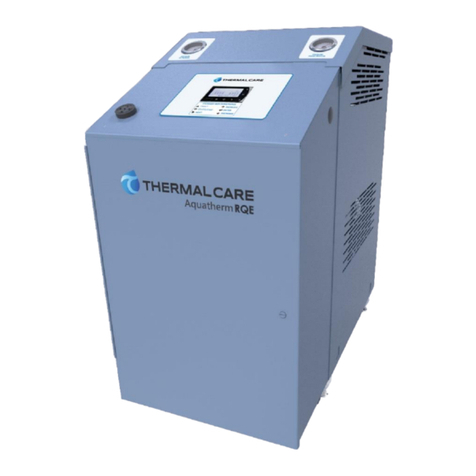
Thermal Care
Thermal Care Aquatherm RQE Instruction Manual
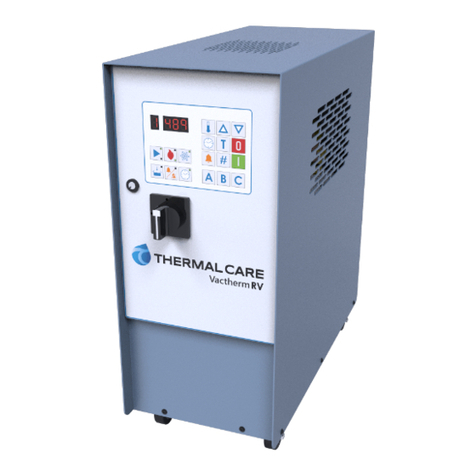
Thermal Care
Thermal Care Vactherm RV Instruction Manual
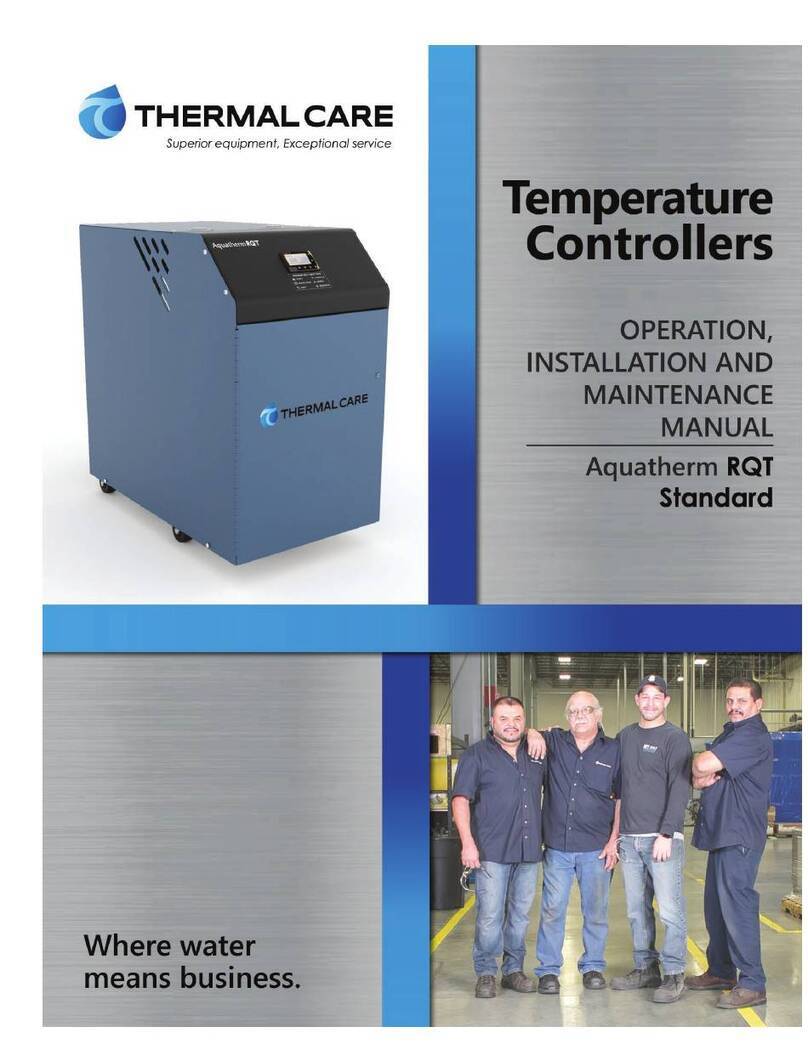
Thermal Care
Thermal Care Aquatherm RQT Standard Instruction Manual

Thermal Care
Thermal Care RA Series User manual
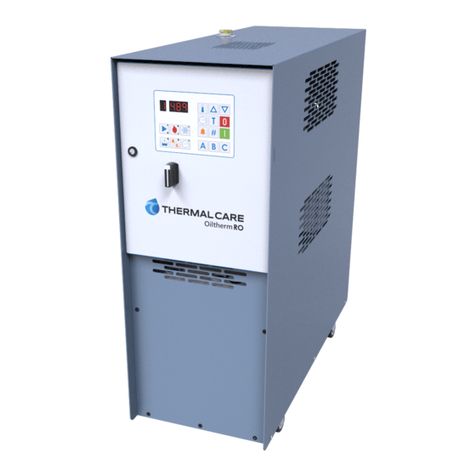
Thermal Care
Thermal Care Oiltherm RO Instruction Manual
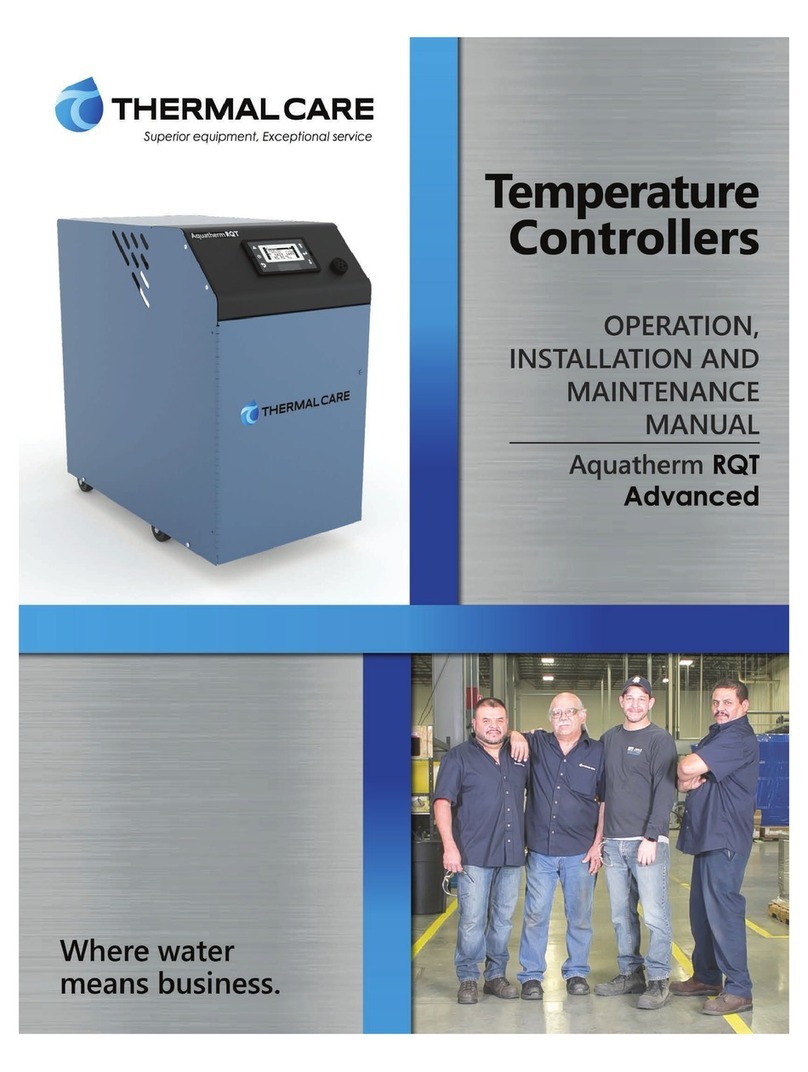
Thermal Care
Thermal Care Aquatherm RQT Advanced Instruction Manual

